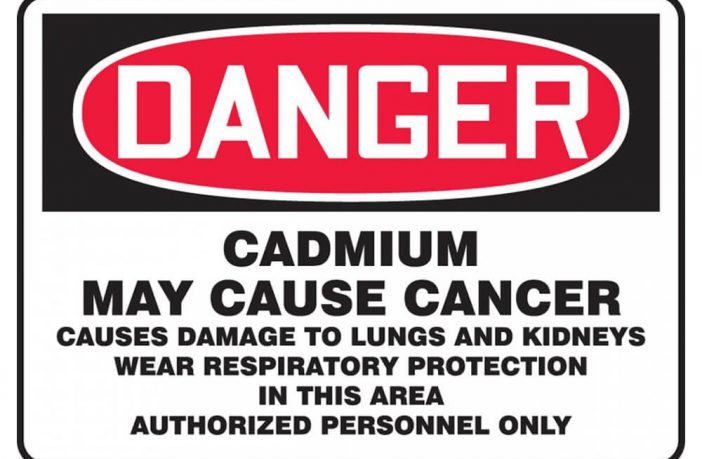- Cadmium is a soft malleable metal found natural with Zinc on the Earth’s crust.
- Workers may be exposed during smelting and refining of metals, and manufacturing plastics, coatings, and thin film solar panels.
- Once cadmium enters the body, it is stored in the liver and kidneys, and then slowly excreted in urine.
Cadmium is a known human carcinogen associated with lung cancer. A carcinogen is a substance or agent that can cause cells to become cancerous by altering their genetic structure so that they multiply continuously and become malignant. Acute and long-term exposures can lead to lung and kidney damage, bone loss, and hypertension.
Cadmium is a natural metal found in the Earth’s crust in combination with Zinc. It is soft and malleable. About 25,000 tons of cadmium is released into the environment every year. About half of this is done through human activities such as manufacturing.
Around 14,000 tons of cadmium is produced annually, mainly in Canada but elsewhere in the USA, Australia, Mexico, Japan and Peru.
Workers may be exposed during smelting and refining of metals and manufacturing plastics, coatings, and solar panels. Electroplating, metal machining, welding and painting are operations associated with cadmium exposure. Workers involved in landfill operations, the recycling of electronic parts, or the recycling of plastics may be exposed to cadmium.
Cadmium is extremely toxic. Once cadmium enters the body, it is stored in the liver and kidneys, and then slowly excreted in urine. Breathing air with high levels of cadmium over a short period of time is initially like the flu with chills, fever and muscle pain, then later can cause lung damage, shortness of breath, chest pain and cough, which may lead to death in severe cases.
Author: Bryan Groenendaal











